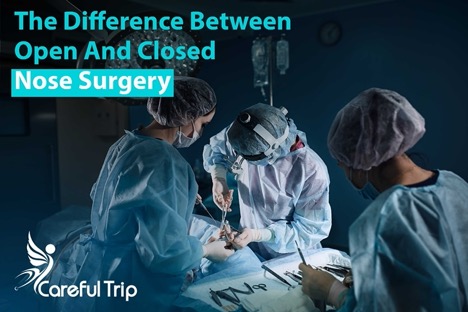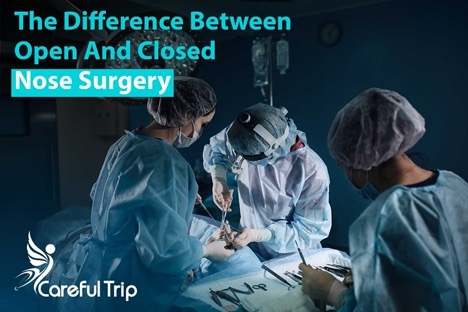Carefultrip, an umbrella providing every patient with absolute medical care. A professional team consisting of experienced specialists and physicians who value patients' health above all.
A trip that brings health as a souvenir!
Careful Trip is the most Reliable Health Tourism Provider in Iran, We offer the best HealthCare quality in Iran These days Iran is famous in field of health tourism in all around the world. The experienced Doctors, Modern Hospitals and affordable prices have made Iran one of the best destinations for health tourism in the world.
Type of Eye Diseases
It is common for eye diseases to have no early symptoms. If they are painless, no visible changes in your vision may occur until the disease has become very advanced. At some point, everyone has trouble with their eyes. It is usually possible to treat most of these symptoms at home. In contrast, others require the care of a specialist. Therefore, understanding different types of eye disease is crucial to acting quickly in case troubling signs arise.
Suppose you want your eyes to remain healthy, vibrant, and colorful for as long as possible. In that case, they require extra care and preservation. You should also take care of your eyes personally, as well as be attentive to any signs or symptoms, and consult an eye doctor immediately so that your eyes can get medical attention and the treatment they need. Don't hesitate to see an eye doctor if any symptoms described below worsen or persist for more than a few days.
lasik eye surgery in iran
Glaucoma occurs when the optic nerve of the eye is damaged and gets worse with time. It often impacts your eye fluid, leading to a buildup of pressure, meaning your optic nerve can be injured. Increasing intraocular pressure, also known as intraocular pressure, can also lead to permanent vision loss if it persists for a long time and is left untreated.
There are two types of glaucoma, open-angle glaucoma, which is the most common type and is a condition in which the eye's drain structure appears normal. Still, the fluid within it does not flow properly. The other type of glaucoma is angle-closure, also called chronic angle-closure or narrow-angle glaucoma. Due to the narrow-angle between cornea and iris, excessive pressure is built up within your eyes, affecting the drainage of your eyes. This condition is also associated with farsightedness and cataracts.
Age-Related Macular Degeneration
A condition known as age-related macular degeneration (AMD) damages sharp and central vision due to macular degeneration. You need your central vision to read, drive, and see objects. An AMD condition affects the macula, the part of the retina that allows fine details to be seen. There are two types of AMD: wet and dry. A wet AMD develops when abnormal blood vessels grow behind the retina, eventually leaking blood and fluid under the macula. As a result of bleeding, leaking, and scarring from these blood vessels, rapid central vision loss occurs. When wet AMD is present, straight lines appear wavy.
With dry AMD, the macula gradually thins as we age, causing vision to become blurred. The central vision in the affected eye gradually deteriorates as less of the macula functions. Both eyes are generally affected by dry AMD.
An early symptom of AMD is drusen. The term drusen refer to thin, yellow-white deposits that are found under the retina. Many of them are present in the 60+ age group. There is no vision loss associated with drusen. One of the symptoms of developing advanced wet or dry AMD involves large, numerous drusen.
Cataracts
Another common eye problem is cataracts. Cataracts form when areas of the eye lens become cloudy. Your retina processes images by passing light through a clear eye lens. Light cannot reach your retina smoothly when cataracts affect your eye lens. You may also experience a halo or glare around lights at night as a result of having cataracts. Cataracts usually form slowly and don't have typical symptoms of red eyes, tearing, and pain. But several symptoms may indicate cataracts, such as night vision problems, blurry vision, or dim vision. So if your contact lens or eyeglasses prescription changes frequently and if you see halos around lights and have problems seeing through glare and light, you may visit an eye doctor for fear of cataracts.

Around lights, you may see 'halos,� problems seeing through glare and light, colors appear faded, and if your contact lens prescription or eyeglass prescription changes frequently.
Amblyopia or Lazy Eye
Amblyopia occurs when the eye and brain do not work well together, leading to decreased vision in one of the eyes. Although it appears normal, the brain is favoring one of the eyes over the other. Amblyopia can be caused by strabismus when one eye is tilted one way, farsighted in one eye, or astigmatic in the other, or by cataracts in a very few cases. Lazy eyes cause most children's vision impairments. Amblyopia usually persists into adulthood unless successfully treated in early childhood and is the most common cause of vision loss in children and young adults.
Diabetic Retinopathy
Diabetes is a common cause of diabetic retinopathy. This condition causes a high percentage of adult blindness. It occurs when the retina is damaged, the light-sensitive tissue behind the eye that is essential for good vision, through progressive damage to its blood vessels. Both eyes usually suffer from diabetic retinopathy. There are four stages of diabetic retinopathy: mild nonproliferative, moderate nonproliferative retinopathy, Which means that some vessels are blocked. Severe nonproliferative retinopathy implies that even more vessels are blocked, and depriving the retina of blood supply. Leading to new blood vessel growth, and finally, the most advanced stage, proliferative retinopathy.
By controlling blood sugar, blood pressure, and lipid abnormalities, the risk of DR can be reduced. Early diagnosis of DR and timely treatment reduce the risk of vision loss. Most patients don't get their eyes examined or get diagnosed too late for treatment to work.
Macular Edema
Macular edema refers to an unwanted buildup of fluids in the central region of the retina. If fluids accumulate inside the macula, it will swell and thicken, causing distorted vision. Fluid accumulation within the macula can occur when abnormal leakage of blood from damaged blood vessels occurs in the retina. Macular edema is believed to be caused most frequently by diabetic retinopathy. Macular edema can be caused by any eye disease that damages the retinal blood vessels. These diseases include age-related macular degeneration, inflammatory diseases, or even surgical error.
Dry Eyes Syndrome
When tears fail to adequately lubricate the eyes, patients are experiencing dry eye syndrome. Tears are one of the mechanisms that keep eyes lubricated. There can be a variety of reasons why eyes aren't properly lubricated, from an insufficient supply of tears to low-quality tears.
When you have dry eyes, you may experience stinging or a burning sensation, mainly in an air-conditioned room, flying on an airplane, or watching a computer screen for too long without a break. Dry eye syndrome may have symptoms such as red eyes, light sensitivity, burning, itching, stinging, excessive mucus production, blurry vision, eye fatigue, and problems wearing contact lenses.
Refractive Errors
One of the most common eye problems is a refractive error. Refractive error is a medical term referring to several eye conditions such as nearsightedness, farsightedness, astigmatism, presbyopia, or a decrease in the ability to focus on close objects, difficulty reading phone book letters, or holding newspapers farther away. Eyeglasses, contact lenses, and sometimes surgery can resolve these conditions.
Strabismus
Strabismus is a problem with the placement of both eyes. Eye crossing or turning out can occur due to strabismus. In this condition, the eyes are not coordinated. This result causes the eyes to look in different directions and not focus on one point at a time.� The brain may learn to ignore the input from one eye if the eyes are not focusing on the same target image, causing permanent vision loss in that eye. The most common cause of strabismus in children is unknown most of the time. The problem most often presents at or shortly after birth.
Uveitis
Uveitis is a condition where the uvea, which contains most of the blood vessels in the eye, is inflamed. In some cases, these diseases may result in the loss of sight. You can have it at any age. You may experience short-term or long-term symptoms. It is more likely to have uveitis in people with immune system disorders such as AIDS, rheumatoid arthritis, and ulcerative colitis. Vision blurriness, pain in the eyes, and redness of the eyes are some of the symptoms of this condition.
Conjunctivitis or Pink Eye
Pinkeye is caused by inflammation of the tissue that lines your eyelids and covers your sclera. Redness, burning, itching, discharge, or the sensation that something is in your eye can be symptoms of this condition. You can get it at any age. The cause of getting it, wash your hands frequently.
Proptosis
Proptosis, a bulging of the eyeball due to Graves' disease, is also known as exophthalmos. There are several common causes of this abnormal protrusion of the eyeballs, including orbital mass, inflammation, thrombosis of the cavernous sinus, and so forth. The main symptoms of this disease are blurry vision, itching and pain in the eyes, sensitivity to light, excessive tearing in the eyes, and diplopia or double vision due to weak eye muscles.
Ophthalmologists usually recommend corneal lubrication for severe cases of proptosis. In situations where lubrication is ineffective, experts turn to surgery, which improves eye surface coverage. A systemic steroid is used to treat orbital congestion caused by inflammatory orbital pseudotumors or thyroid eye diseases. In cases of arteriovenous fistulas that cause cavernous sinuses, selective embolization is also recommended.
nose job cost in iran
More than 80,000 rhinoplasty are performed annually in Iran, which is seven times more than the number of rhinoplasty in the United States. The high success rate of rhinoplasty in Iran is due to various factors such as the improvement of surgical techniques, competitive prices, and finally, skilled physicians. The cost of a nose job in Iran is usually lower than in other countries, while the level of satisfaction is higher.

What is Rhinoplasty?
From an aesthetic point of view, nose job surgery, known medically as rhinoplasty, changes the shape and size of the nose, adjusting its angle to the features of the face and lips. It also corrects other problems such as bulging and asymmetry and other nasal defects.
People who suffer from respiratory problems due to air blockage in the nasal cartilage also prefer to have rhinoplasty to improve their condition.











